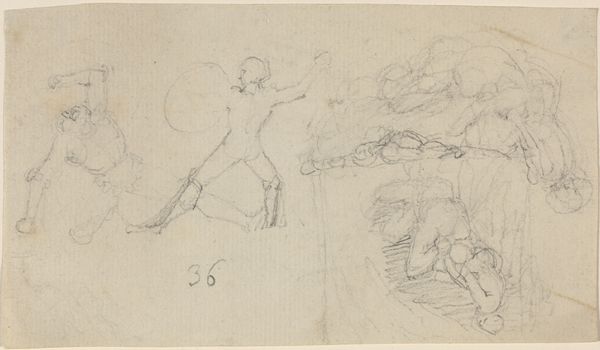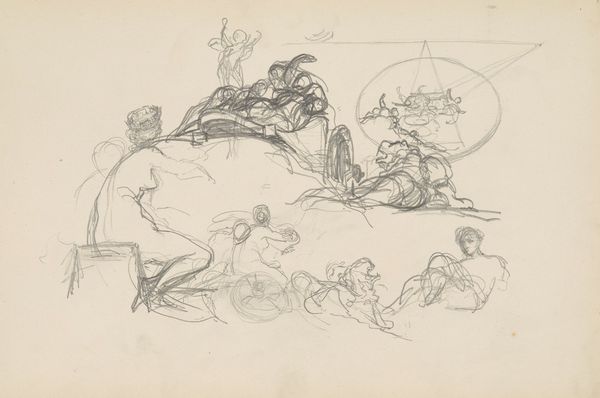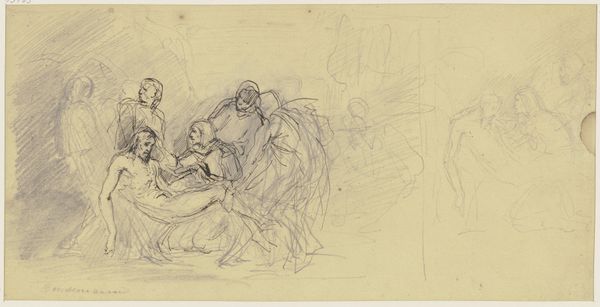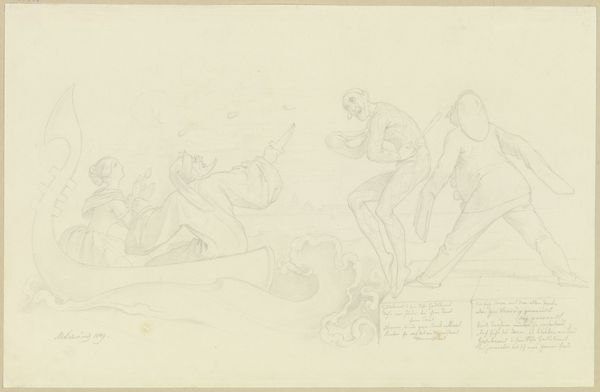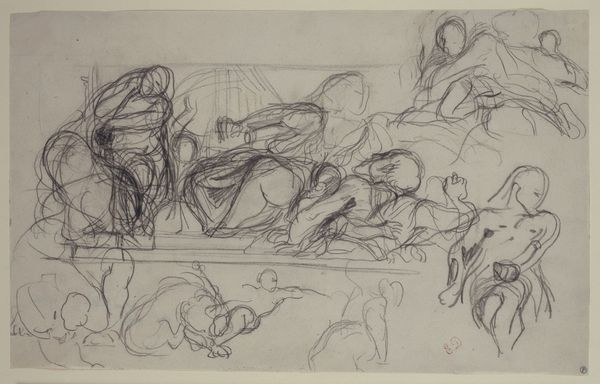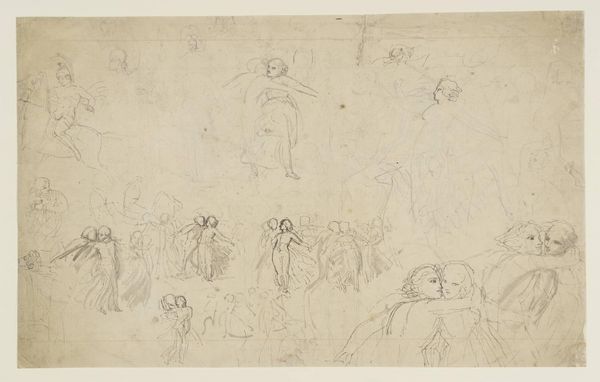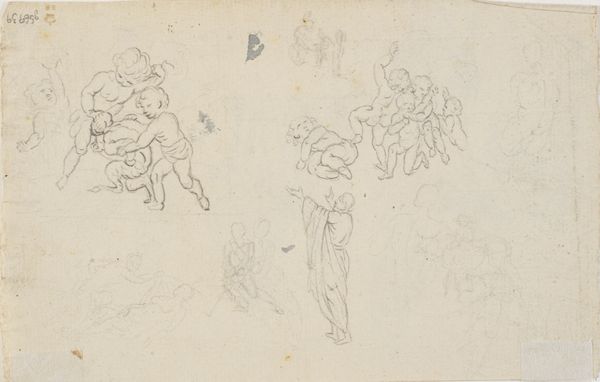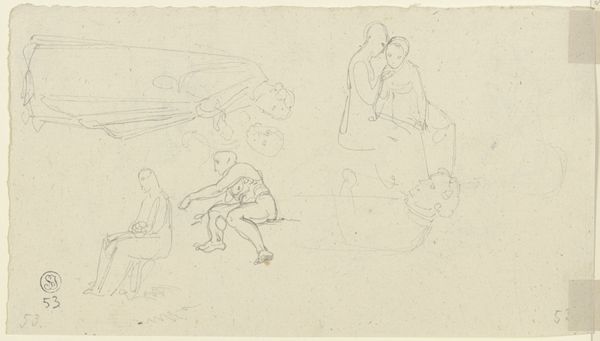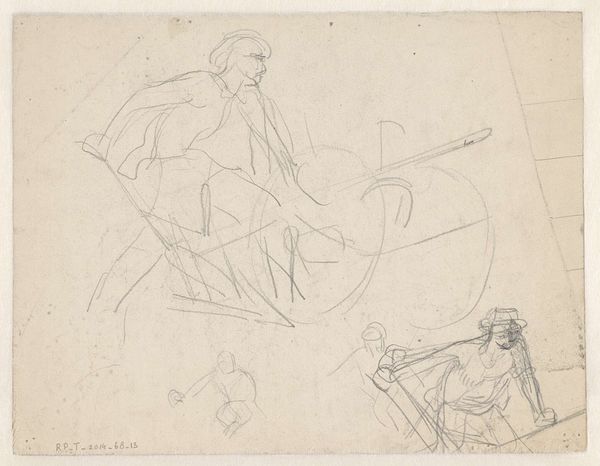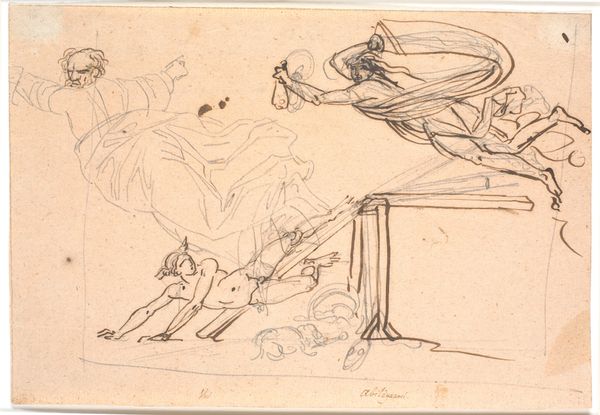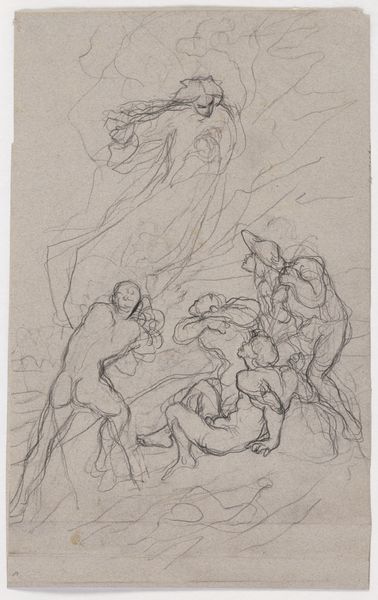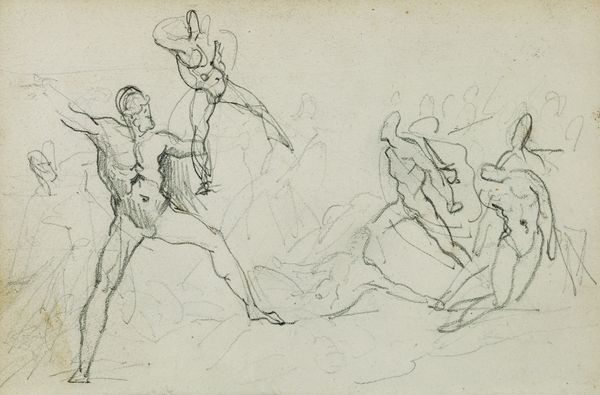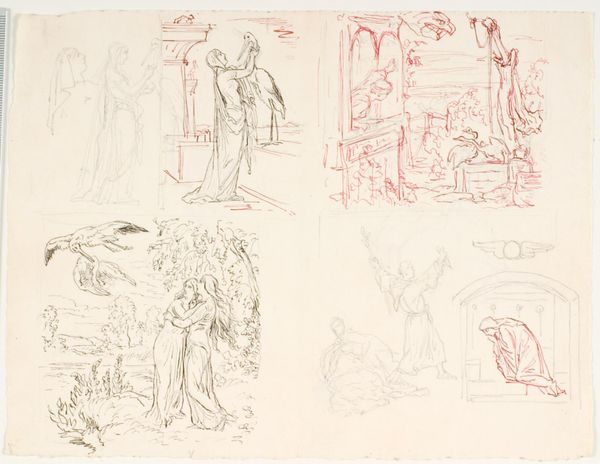
Sheet of Studies with Angels and Cowering Figures (Illustration for Macklin's Bible?) c. 1791
0:00
0:00
drawing, paper, pencil
#
drawing
#
ink drawing
#
pen sketch
#
pencil sketch
#
figuration
#
paper
#
romanticism
#
pencil
#
history-painting
#
academic-art
Dimensions: sheet: 15.8 x 29 cm (6 1/4 x 11 7/16 in.)
Copyright: National Gallery of Art: CC0 1.0
Curator: Let’s turn our attention to a delicate sheet of studies by Thomas Stothard, dating from around 1791. It’s tentatively titled "Sheet of Studies with Angels and Cowering Figures (Illustration for Macklin's Bible?)." Editor: The initial impression is one of lightness, a flurry of figures sketched in what looks like pencil and ink. It feels ethereal, almost dreamlike, definitely evokes a Romantic sensibility. Curator: Precisely. The materials here – pencil and ink on paper – suggest a preliminary stage, a working out of ideas. This wasn't meant to be the final product. The presence of numerous figures points towards a history painting, potentially for an illustrated bible produced by Thomas Macklin, a large publishing project that aimed to cater to a growing middle-class audience keen to consume elevated imagery. Editor: So, we’re not just looking at an artwork, but at evidence of artistic labor and commercial production. Were such preliminary drawings common practice, or did Stothard create them partly with a collector market in mind? And what about the paper itself – its texture, weight, even its cost, compared to other options available at the time? Curator: Excellent questions. Stothard would have been negotiating a relationship with various stakeholders. Commissioners who wanted to visualize bible narratives were becoming very wealthy at this point, through colonial endeavors and the transformation of England. They wielded symbolic influence in how culture and faith could become tools for ideological propagation. Editor: This transforms the initial innocent reading into one steeped in the socio-economic realities of the time, how something meant for spiritual enlightenment can be rooted in power structures. Seeing how it might have been part of a larger enterprise changes how we see the individual choices within it. Curator: Indeed, the ‘heavenly’ image and spiritual themes are themselves constructed within the economic realities of art production and dissemination. It encourages a more critical perspective on the entire aesthetic experience. Editor: A single drawing suddenly becomes a nexus point in which a nexus of industry, ideology and aesthetics converge! It's a fantastic way to explore the many material facets behind even a simple sketch.
Comments
No comments
Be the first to comment and join the conversation on the ultimate creative platform.
